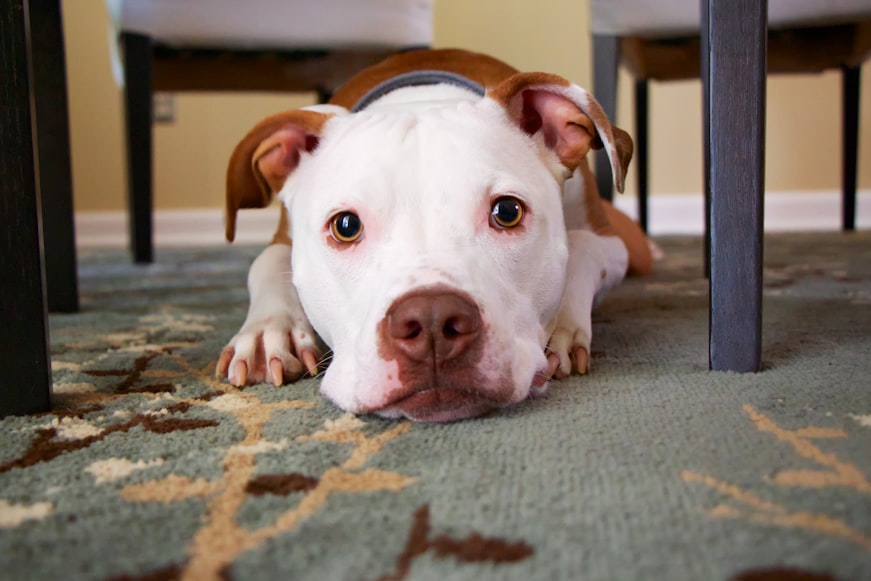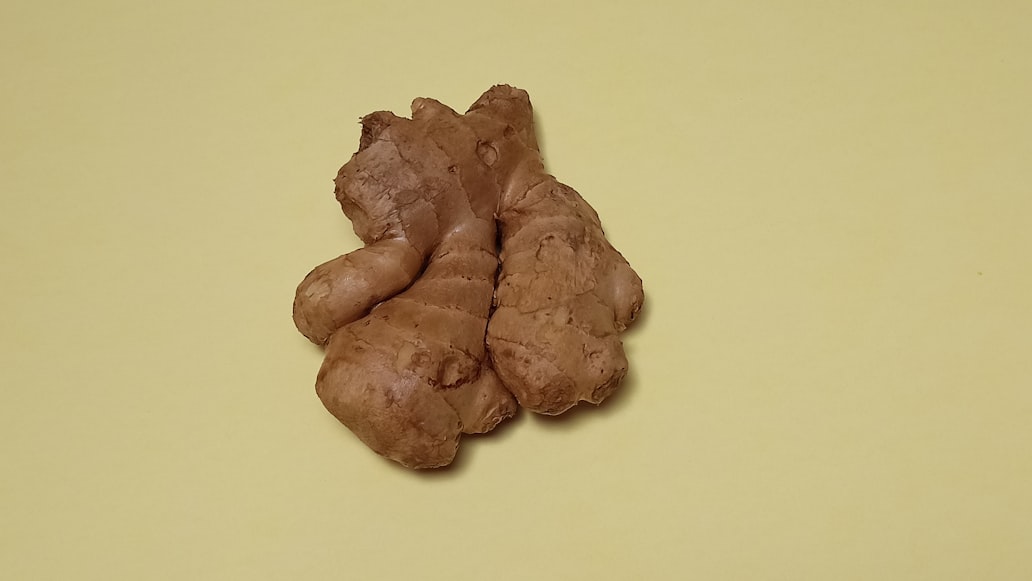Comprehensive Dog Training for Puppies and Adult Dogs

Introduction:
Training your dog is an essential aspect of pet ownership that fosters a strong bond, ensures safety, and promotes overall well-being. While training methods may vary slightly for puppies and older dogs, the principles remain the same. This article provides a comprehensive guide to dog training for both young and adult dogs.
Chapter 1: Puppy Training
1.1. Establishing Basic Commands:
- Start with simple commands like “sit,” “stay,” and “come.”
- Use positive reinforcement with treats or praise.
- Break down tasks into smaller steps and gradually increase complexity.
1.2. Housebreaking:
- Designate a specific spot for potty breaks and take your puppy out frequently.
- Reward your puppy for going in the correct spot.
- Be patient and consistent during the training process.
1.3. Bite Inhibition:
- Teach your puppy that biting is unacceptable.
- Withdraw attention or say “no” firmly when they bite.
- Provide appropriate chew toys as alternatives.
1.4. Socialization:
- Expose your puppy to different people, places, and animals in a controlled environment.
- Reward positive interactions and help your puppy build confidence.
Chapter 2: Adult Dog Training
2.1. Obedience Commands:
- Review and reinforce basic commands from puppyhood.
- Introduce more advanced commands such as “heel,” “recall,” and “leave it.”
- Use a combination of positive reinforcement and corrections.
2.2. Behavioral Issues:
- Address any behavioral problems that have developed, such as aggression, anxiety, or destructiveness.
- Consult with a professional dog trainer for guidance on specific issues.
- Apply appropriate training methods to modify the behavior.
2.3. Leash Training:
- Teach your adult dog to walk calmly on a leash without pulling or lunging.
- Start in a quiet area and gradually introduce distractions.
- Reward your dog for good walking behavior.
2.4. Mental and Physical Stimulation:
- Provide plenty of physical exercise to keep your dog healthy and mentally stimulated.
- Engage in interactive games, such as fetch or hide-and-seek.
- Training itself can also provide mental stimulation.
Chapter 3: Combined Training for Puppies and Adult Dogs
3.1. Supervised Interactions:
- Allow puppies and adult dogs to interact under supervision to learn from each other’s behavior.
- Monitor the interactions and intervene if any aggressive behavior occurs.
3.2. Shared Activities:
- Engage both puppies and adult dogs in activities that foster bonding and socialization, such as walks, play sessions, or group training classes.
- This helps create a harmonious household environment.
3.3. Consistency and Patience:
- Ensure consistency in training methods for both puppies and adult dogs.
- Be patient and understanding during the training process, as it may take time and effort.
Conclusion:
Comprehensive dog training is crucial for the well-being of both puppies and adult dogs. By following the principles outlined in this article, you can create a strong bond with your companion, ensure their safety, and lay the foundation for a lifetime of happy and obedient companionship. Remember to be patient, consistent, and reward your dogs for their efforts.
Establishing Trust and Bonding:

As a dog trainer catering to both puppies and older dogs, I often emphasize the crucial importance of establishing trust and bonding. This fundamental step sets the stage for a mutually beneficial and successful training experience. Here’s a comprehensive guide to help you foster this essential connection:
Creating a Safe and Comfortable Environment
- Provide a designated space within your home where your dog can retreat to, such as a crate or a quiet corner.
- Ensure the environment is free from potential hazards, loud noises, or overwhelming situations.
- Respect your dog’s personal space and only handle them when they feel comfortable.
Building a Mutually Respectful Relationship
- Communicate with your dog using a calm and positive tone, avoiding harsh words or punishments.
- Listen attentively to your dog’s body language and vocalizations to understand their preferences and needs.
- Treat your dog with respect and avoid using physical force or coercion.
- Involve your dog in decision-making, such as choosing their toys or walks.
Communicating Effectively
- Use clear and consistent commands, pairing them with positive reinforcement (e.g., treats, praise) when your dog responds correctly.
- Be patient and avoid overwhelming your dog with too many commands at once.
- Practice commands in different environments to generalize their understanding.
- Respect your dog’s boundaries and give them time to process information.
Tips for Puppies and Older Dogs
- Puppies: Start training early, focusing on basic commands and establishing a strong bond. Be patient and reward heavily for desired behaviors.
- Older Dogs: Address any underlying behavioral issues or health concerns before initiating training. Be mindful of their limitations and adapt training sessions accordingly.
Remember, trust and bonding take time to develop. By creating a safe and respectful environment, communicating effectively, and respecting your dog’s individual needs, you can lay the foundation for a fulfilling and rewarding training experience for both of you.
Basic Obedience Commands:

Introduction:
Training your furry friend is an essential part of responsible pet ownership. Whether you have a mischievous puppy or a seasoned senior dog, teaching basic obedience commands can enhance their well-being and strengthen your bond. Here’s a guide to some fundamental commands that you can use for both puppies and older dogs:
1. Sit:
For Puppies:
* Start by holding a treat close to your puppy’s nose.
* Slowly move the treat over their head, luring them backward.
* As their hindquarters begin to lower, say “Sit” and give them the treat.
* Repeat the process consistently.
For Older Dogs:
* If your dog already knows “Sit,” reinforce it with treats and praise.
* If not, follow the steps for puppies, but be patient and avoid using force.
2. Stay:
For Puppies:
* Once your puppy has mastered “Sit,” introduce “Stay.”
* Hold a treat in front of them and say “Sit,” followed by “Stay.”
* Gradually increase the distance and duration you ask them to stay.
For Older Dogs:
* Use a similar approach as with puppies, starting with short stays.
* As they become proficient, gradually increase the difficulty by adding distractions or changing locations.
3. Come:
For Puppies:
* Attach a leash to your puppy’s collar.
* Hold a treat in front of them and start walking away while calling their name and saying “Come.”
* When they follow you, reward them with the treat and praise.
For Older Dogs:
* If your dog knows “Come,” practice it in different environments to generalize the command.
* If not, follow the steps for puppies, but use a longer leash initially.
4. Heel:
For Puppies:
* Hold a treat in your left hand and the leash in your right.
* Say “Heel” and encourage your puppy to stay close to your left leg.
* Reward them with the treat as they maintain the position.
For Older Dogs:
* If your dog has never learned “Heel,” start by practicing on a loose leash in a quiet area.
* Gradually increase the distractions and distance as they become more proficient.
Tips for Success:
- Start training in short, frequent sessions.
- Use positive reinforcement, such as treats, praise, or toys.
- Be patient and consistent.
- Avoid using force or punishment.
- Consult with a professional dog trainer if you encounter difficulties.
Conclusion:
Mastering these basic obedience commands can improve your dog’s behavior, enhance communication, and strengthen your relationship. By combining patience, positive reinforcement, and consistent practice, you can train both puppies and older dogs to become well-behaved and obedient companions. Remember that training is an ongoing process, and with love and dedication, your furry friend will thrive with these essential commands.
Potty Training:

Potty training is a crucial aspect of responsible pet ownership. It ensures a harmonious living environment and prevents accidents that can cause frustration for both you and your furry friend. This article will provide a comprehensive guide to potty train both puppies and older dogs effectively.
Establishing a Designated Potty Area
The first step in potty training is establishing a specific area where your dog is allowed to eliminate. Choose a consistent location outside, such as a grassy patch or a designated spot on a walkway. This will help your dog associate the area with the act of going potty.
Using Verbal Cues and Positive Reinforcement
Once you have established a designated potty area, start using verbal cues to communicate your intentions to your dog. For example, you can say “go potty” or “outside” whenever you take them to the designated area. Consistency is key, so use the same cue each time.
When your dog goes potty in the designated area, reward them immediately with treats, praise, or a favorite toy. This positive reinforcement will associate the desired behavior with a positive outcome, making them more likely to repeat it.
Managing Accidents
Accidents are inevitable during potty training. If your dog has an accident, do not punish them. Instead, calmly clean up the mess and take them outside to the designated potty area. Avoid using harsh methods or scolding, as this can create fear and anxiety and hinder their progress.
If accidents become frequent, consider the following:
- Medical conditions: Rule out any underlying medical issues that may be contributing to accidents.
- Repetition: Go back to the basics and start potty training from the beginning.
- Changing environments: If you move or change your daily routine, it may take some time for your dog to adjust. Be patient and provide extra supervision during these transitions.
Additional Tips
- Supervise your dog: Especially during the early stages of potty training, supervise your dog to catch them in the act and direct them to the designated potty area.
- Take frequent potty breaks: Young puppies need to go potty frequently, so take them outside every 30-60 minutes. Adjust the frequency as your dog matures.
- Use a crate: Crate training can help prevent accidents by limiting your dog’s access to areas where they might have accidents.
- Be consistent: Maintain a consistent potty training schedule and use the same verbal cues. Avoid changing the designated potty area or training methods.
Potty training can be a challenging but rewarding experience. By following these guidelines and using patience and positive reinforcement, you can successfully potty train both puppies and older dogs, creating a clean and harmonious living environment for you and your furry companion.
Socialization:

Socialization is an essential aspect of dog training, regardless of a dog’s age. It involves exposing dogs to a variety of people, animals, and environments in a positive and controlled manner. By doing so, we help our canine companions develop confidence, reduce fear and anxiety, and improve their overall well-being.
Benefits of Socialization
Socialization provides numerous benefits for both puppies and older dogs:
- Reduced fear and anxiety: Dogs that are well-socialized are less likely to be fearful or anxious in unfamiliar situations, making them more confident and enjoyable companions.
- Improved behavior: Socialized dogs tend to be better behaved and more responsive to training, as they have learned how to interact appropriately with others.
- Increased happiness: A well-socialized dog is a happy dog, as it is able to enjoy the company of other animals and people without fear or stress.
Socialization for Puppies
The early socialization window for puppies is between 8 and 16 weeks of age. During this period, it is crucial to expose puppies to a wide range of experiences, including:
- People: Visitors of all ages and appearances, including strangers, children, and people wearing different clothing.
- Animals: Other dogs, cats, and livestock, while supervised and ensuring positive interactions.
- Environments: Busy streets, parks, construction sites, and other noisy or unfamiliar places, in a controlled and safe manner.
Socialization for Older Dogs
While socialization is most effective during puppyhood, older dogs can also benefit from positive experiences. For dogs with limited socialization experience, start slowly and gradually increase the intensity and variety of interactions. Focus on creating positive experiences and avoid overwhelming the dog.
How to Promote Positive Interactions
When socializing your dog, it is essential to promote positive interactions. Here are some tips:
- Use high-value treats: Reward your dog for calm and friendly behavior during interactions.
- Keep interactions short and positive: Start with brief introductions and gradually increase the duration as the dog becomes more comfortable.
- Respect your dog’s boundaries: Give your dog space if they seem overwhelmed or uncomfortable.
- Supervise all interactions: Ensure that dogs are meeting in a safe and controlled environment, and intervene if any aggression occurs.
Building Confidence
Socialization helps dogs build confidence by giving them the opportunity to experience new situations and learn that they can handle themselves. This can be especially beneficial for fearful or anxious dogs. By exposing them to positive experiences in a gradual and controlled manner, we can help them overcome their fears and become more confident in themselves and their environment.
Conclusion
Socialization is a key component of responsible dog ownership. By exposing our canine companions to a variety of people, animals, and environments in a positive and controlled manner, we help them develop into well-adjusted and happy members of our families. Remember to socialize both puppies and older dogs, and always prioritize positive interactions to build confidence and promote their overall well-being.
Behavioral Correction:
Introduction
Behavioral issues are a common challenge for dog owners. While puppies may exhibit certain behaviors out of sheer immaturity, older dogs can develop problems due to underlying medical conditions, anxiety, or a lack of proper training. It’s essential to approach behavioral correction in a compassionate and effective manner, focusing on identifying the underlying causes and using consistent, positive methods.
Step 1: Identifying and Understanding Problem Behaviors
The first step in behavioral correction is to identify the specific behaviors that are causing concern. These can range from aggression to excessive barking, house soiling, and destructiveness. It’s important to understand the context and triggers that lead to these behaviors.
- Observe your dog closely: Note the situations, people, or environments that trigger the problem behavior.
- Rule out medical causes: Consult with a veterinarian to rule out any underlying health conditions that may be contributing to the behavior.
- Gather information: Talk to your dog’s previous owner, groomer, or anyone else who has interacted with your dog to gain insights into their past experiences.
Step 2: Using Consistent and Positive Methods
Once you’ve identified the problem behaviors and their triggers, it’s time to implement behavioral correction methods. Positive reinforcement and negative punishment are effective techniques for modifying behavior in both puppies and older dogs.
- Positive reinforcement: Reward your dog with treats, praise, or play when they exhibit desired behaviors. This helps them associate positive consequences with good choices.
- Negative punishment: Remove privileges or rewards from your dog after they display unwanted behaviors. However, avoid using physical punishment, as this can only worsen the problem.
Step 3: Addressing Underlying Causes
In many cases, problem behaviors are a symptom of an underlying issue. Addressing these causes can help prevent the behavior from recurring.
- Anxiety management: Fear or anxiety can lead to a wide range of behavioral problems. Consider using desensitization and counter-conditioning techniques to reduce your dog’s anxiety levels.
- Medical treatment: If medical issues are contributing to the problem behavior, your veterinarian may prescribe medications or therapies to address the underlying cause.
- Training: Puppies and older dogs may benefit from obedience training classes to learn basic commands and improve their overall socialization skills.
Conclusion
Behavioral correction is an ongoing process that requires patience, consistency, and a positive approach. By identifying and understanding problem behaviors, using consistent and positive methods, and addressing underlying causes, you can help your dog overcome behavioral challenges and lead a happier, more well-adjusted life. Remember, every dog is different, and what works for one may not work for another. Consult with a qualified dog trainer if you encounter any difficulties or if the problem persists despite your efforts.
Advanced Obedience Commands:
As your dog ages and their basic obedience skills strengthen, it’s time to elevate their training with advanced obedience commands. These commands offer greater control and freedom, fostering a deeper bond between you and your canine companion.
1. Off-Leash Obedience
Off-leash obedience allows your dog to roam freely while still maintaining focus and responsiveness. This advanced command requires patience and consistent practice.
- Start in a low-distraction environment, such as your home or a quiet park.
- Teach your dog the “heel” command and reward them for staying close to your side without a leash.
- Gradually increase distractions, such as other dogs or people, while reinforcing the “heel” command.
- Once your dog has mastered heeling on-leash, begin practicing off-leash in controlled areas.
2. Advanced Recall
Advanced recall builds upon the basic recall command, teaching your dog to return to you even with tempting distractions present.
- Find a secluded area where your dog can focus on you.
- Begin by calling your dog’s name and rewarding them for coming to you.
- Gradually introduce distractions, such as toys, treats, or other people.
- If your dog becomes distracted, gently tug on the leash to remind them of the recall cue.
- Practice in various environments to ensure your dog responds reliably in all situations.
3. Stay with Distraction
The “stay” command is essential for controlling your dog’s behavior in various situations. This advanced variation tests their ability to remain in place despite distractions.
- Teach your dog the basic “stay” command in a calm environment.
- Once your dog has mastered the basic stay, introduce distractions, such as moving objects, sounds, or people.
- Gradually increase the duration and intensity of the distractions while praising your dog for remaining in place.
- Keep training sessions short and rewarding to maintain your dog’s focus and motivation.
Training Tips:
- Use positive reinforcement and reward-based training methods.
- Be patient and consistent with your commands.
- Break down commands into smaller steps to ensure your dog’s understanding.
- Practice regularly in various environments to generalize your dog’s skills.
- Consult with a certified dog trainer for guidance and support.
Advanced obedience commands empower your dog with greater control, independence, and confidence. By incorporating these techniques into your training routine, you and your canine companion will strengthen your bond and enjoy a more fulfilling partnership.
Physical and Mental Stimulation:
As responsible dog owners, providing our furry companions with adequate physical and mental stimulation is crucial for their overall well-being. This not only keeps them happy and fulfilled but also significantly reduces the risk of boredom and destructive behaviors.
Physical Exercise
Regular exercise is essential for dogs of all ages. The amount and type of exercise required will vary depending on the breed, age, and health status of the dog.
Puppies: Puppies have a lot of energy to burn, so they need plenty of opportunities to run, play, and explore. Short walks, interactive play sessions, and puppy agility courses are all great ways to provide physical stimulation for young dogs.
Older Dogs: As dogs age, their exercise needs may change. Older dogs may not be able to handle long walks or strenuous activities, but they still need regular exercise to stay healthy and active. Shorter walks, gentle swimming, or indoor play sessions can be suitable for senior dogs.
Mental Enrichment
Mental stimulation is just as important as physical exercise for dogs. Engaging them in activities that challenge their minds will prevent boredom, improve cognitive function, and reduce behavioral problems.
Puppies: Puppies are naturally curious and eager to learn. Provide them with interactive toys, puzzle feeders, and training sessions to keep their minds active. Hide-and-seek, fetch, and obstacle courses are also great ways to stimulate puppies mentally.
Older Dogs: As dogs age, they may have difficulty remembering things and lose interest in previous activities. To keep their minds engaged, introduce new toys, puzzles, and games. Puzzle feeders that provide mental challenges can also be beneficial for older dogs.
Preventing Boredom and Destructive Behaviors
When dogs are not sufficiently stimulated, they may become bored and develop destructive behaviors, such as chewing, digging, or barking excessively. To prevent these problems, it is crucial to provide your dog with plenty of physical and mental exercise.
Signs of Boredom in Dogs:
- Chewing on furniture or other inappropriate objects
- Digging in the yard or garden
- Barking or whining excessively
- Pacing or restlessness
- Destructive behavior towards other dogs or people
Conclusion
Providing adequate physical and mental stimulation is an essential part of responsible dog ownership. By engaging in regular exercise, mental enrichment activities, and preventing boredom, we can help our dogs live happy, healthy, and well-adjusted lives at any age.
Problem-Solving:
Training your canine companion can be a rewarding journey. However, along the way, it’s common to encounter challenges. Whether you’re training a young pup or an older dog, addressing specific problems is crucial for a harmonious and well-behaved pet.
Common Challenges and Effective Solutions
- Barking: Identify the trigger (e.g., fear, boredom) and provide a distraction or alternative outlet for the dog’s energy. Use positive reinforcement (treats, praise) when the dog remains quiet.
- Chewing: Ensure the dog has access to appropriate chew toys that meet their needs. Redirect chewing to designated areas and discourage chewing on furniture by using bitter spray or a “No!” command.
- Anxiety: Recognize the signs of anxiety (e.g., pacing, panting, destructive behavior) and try to identify the source of stress. Provide a safe and comfortable environment, use calming aids (e.g., pheromone diffusers, thunder shirts), and engage in regular exercise to reduce anxiety levels.
When to Seek Professional Help
Sometimes, self-help techniques may not be sufficient to resolve behavioral issues. Consider seeking professional guidance from a certified dog trainer or animal behaviorist if:
- The problem persists despite consistent training efforts.
- The behavior is severe or poses a danger to the dog or others.
- You lack the knowledge or experience to effectively implement training techniques.
Benefits of Professional Help
- Expertise: Professionals have extensive knowledge and experience in addressing behavioral issues.
- Tailored Training Plan: They will assess the dog’s individual needs and develop a customized training plan that addresses the specific challenges.
- Support and Guidance: Trainers provide ongoing support and guidance, ensuring you implement the training strategies correctly.
Conclusion
Problem-solving is an integral part of dog training. By addressing specific challenges with effective solutions, you can foster a strong bond with your pet and create a happy and well-adjusted companion. If you encounter difficulties that you cannot resolve on your own, do not hesitate to seek professional help. Remember, training and problem-solving are an ongoing process, and consistency, patience, and a love of your furry friend will help you overcome any obstacles.
Continued Training:
In the realm of dog training, the journey doesn’t end with puppyhood. Continued training is an essential aspect of fostering a harmonious and fulfilling relationship with your furry companion throughout their lives.
Regularly Reinforcing and Practicing Commands
Just like any skill, obedience commands require regular reinforcement and practice to become ingrained in your dog’s behavior. Schedule short, frequent training sessions to revisit basic commands such as “sit,” “stay,” and “come.” Keep the sessions positive and engaging, using treats or praise as rewards.
Adapting Training to the Dog’s Age and Abilities
As your dog ages, their physical and cognitive abilities may change. Adapt your training accordingly. For example, senior dogs may require shorter training sessions to avoid overexertion. Consider introducing commands related to mobility, such as “up” or “down.”
Maintaining a Consistent Approach
Consistency is paramount in dog training. All family members involved in training must use the same commands, cues, and rewards. This helps minimize confusion and reinforces the desired behaviors. Avoid using negative reinforcement, such as punishment or scolding, as it can damage your bond with your dog.
Benefits of Continued Training
Continued training provides a multitude of benefits for both you and your dog:
- Enhanced obedience: Regular practice strengthens your dog’s understanding of commands, improving their response time and overall behavior.
- Improved communication: Continued training fosters a deeper bond between you and your dog, allowing you to communicate more effectively.
- Mental stimulation: Training sessions provide mental exercise for dogs, keeping their minds active and engaged.
- Increased socialization: Group training classes can expose your dog to other dogs and people, promoting socialization and reducing anxiety.
- Enhanced safety: Well-trained dogs are less likely to engage in unsafe behaviors, such as running off-leash or jumping on strangers.
Conclusion
Continued training is an invaluable investment in your dog’s well-being and your relationship with them. By regularly reinforcing commands, adapting training to their changing needs, and maintaining a consistent approach, you can nurture your dog’s growth and enjoy a lifetime of companionship and harmony.



















